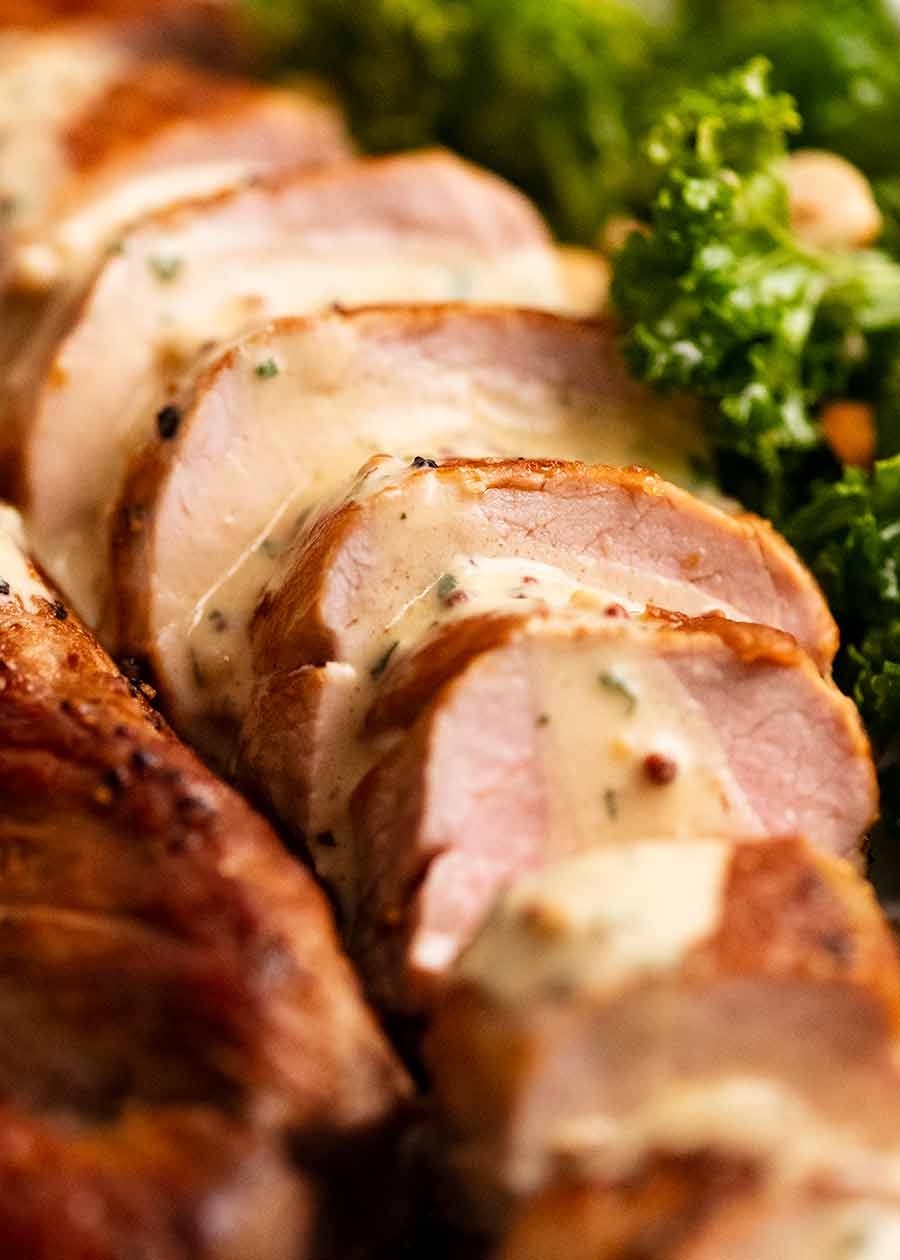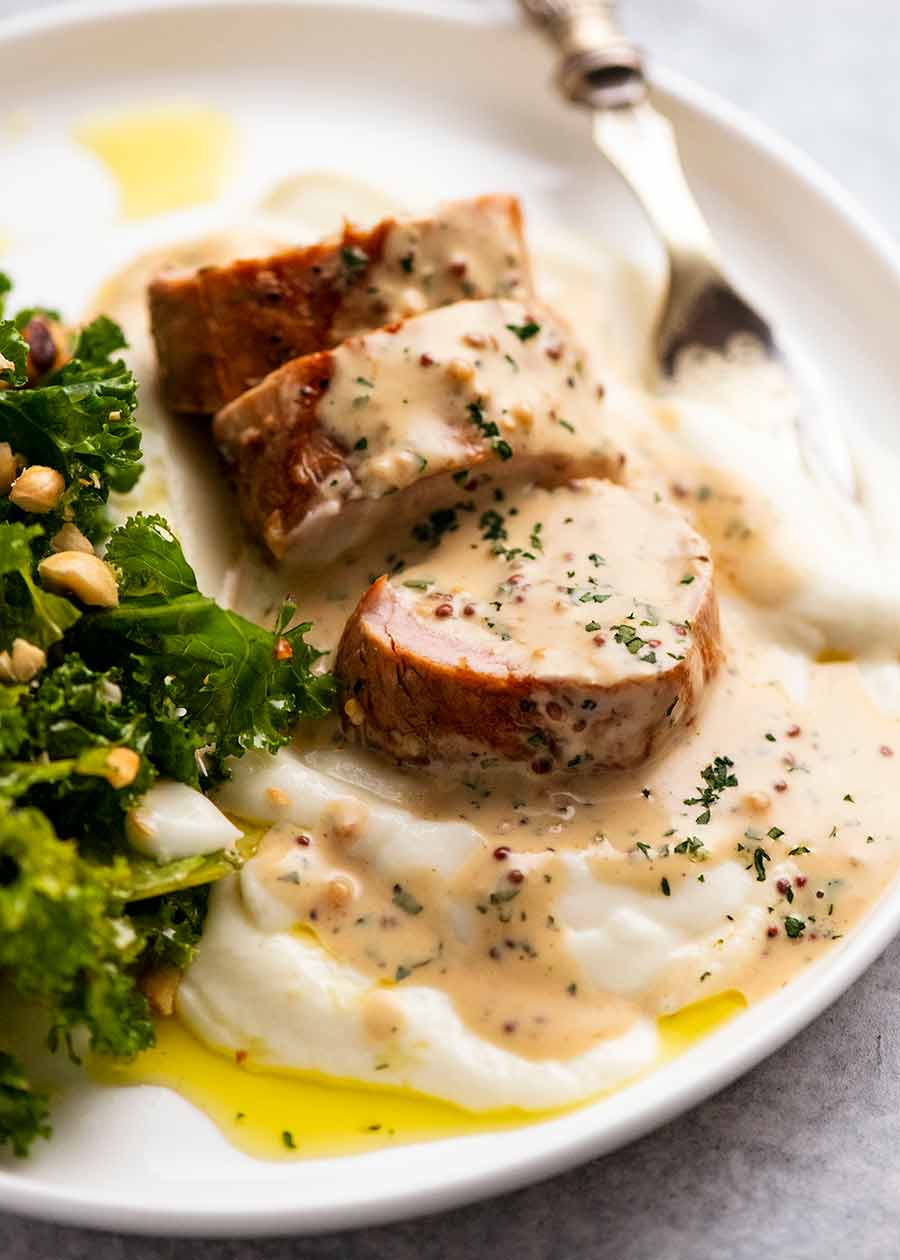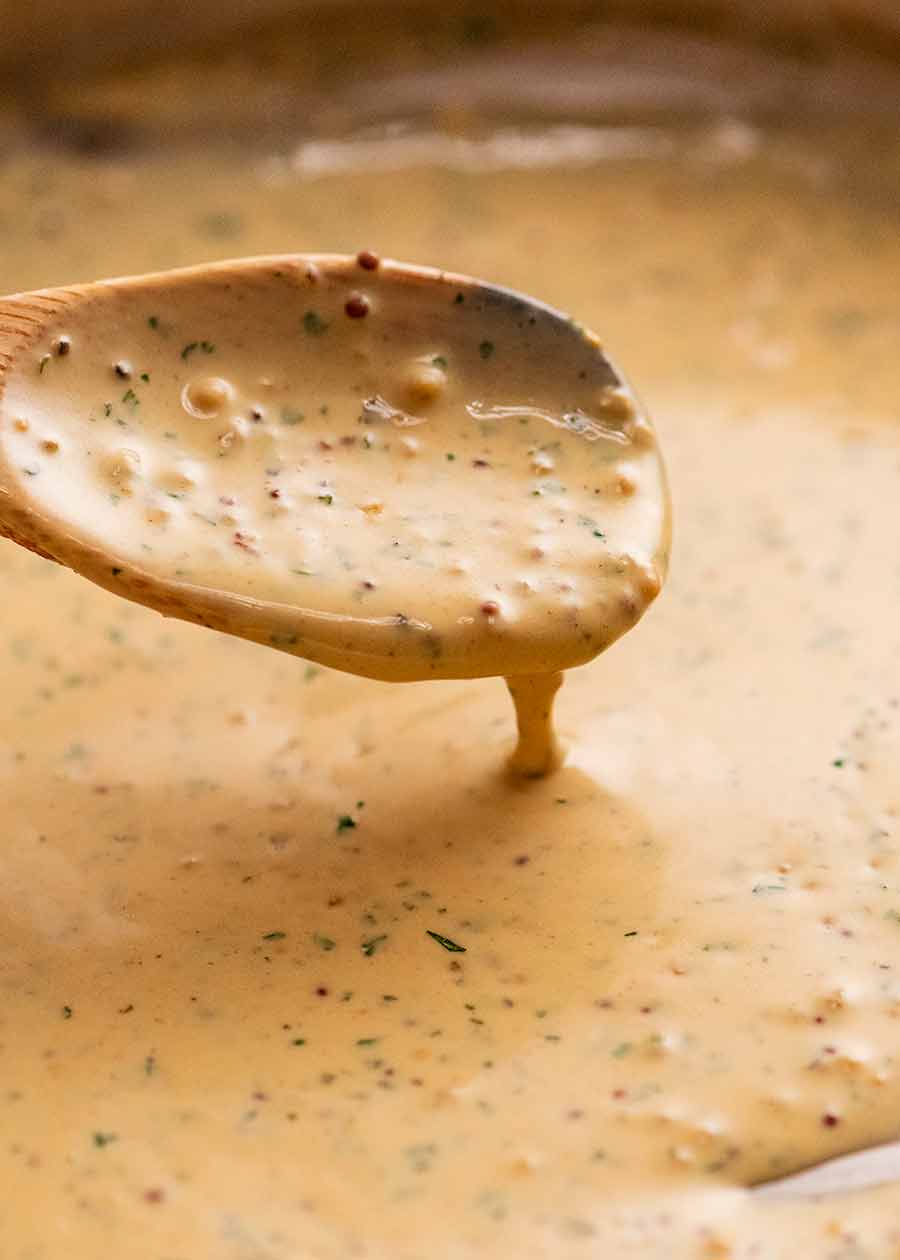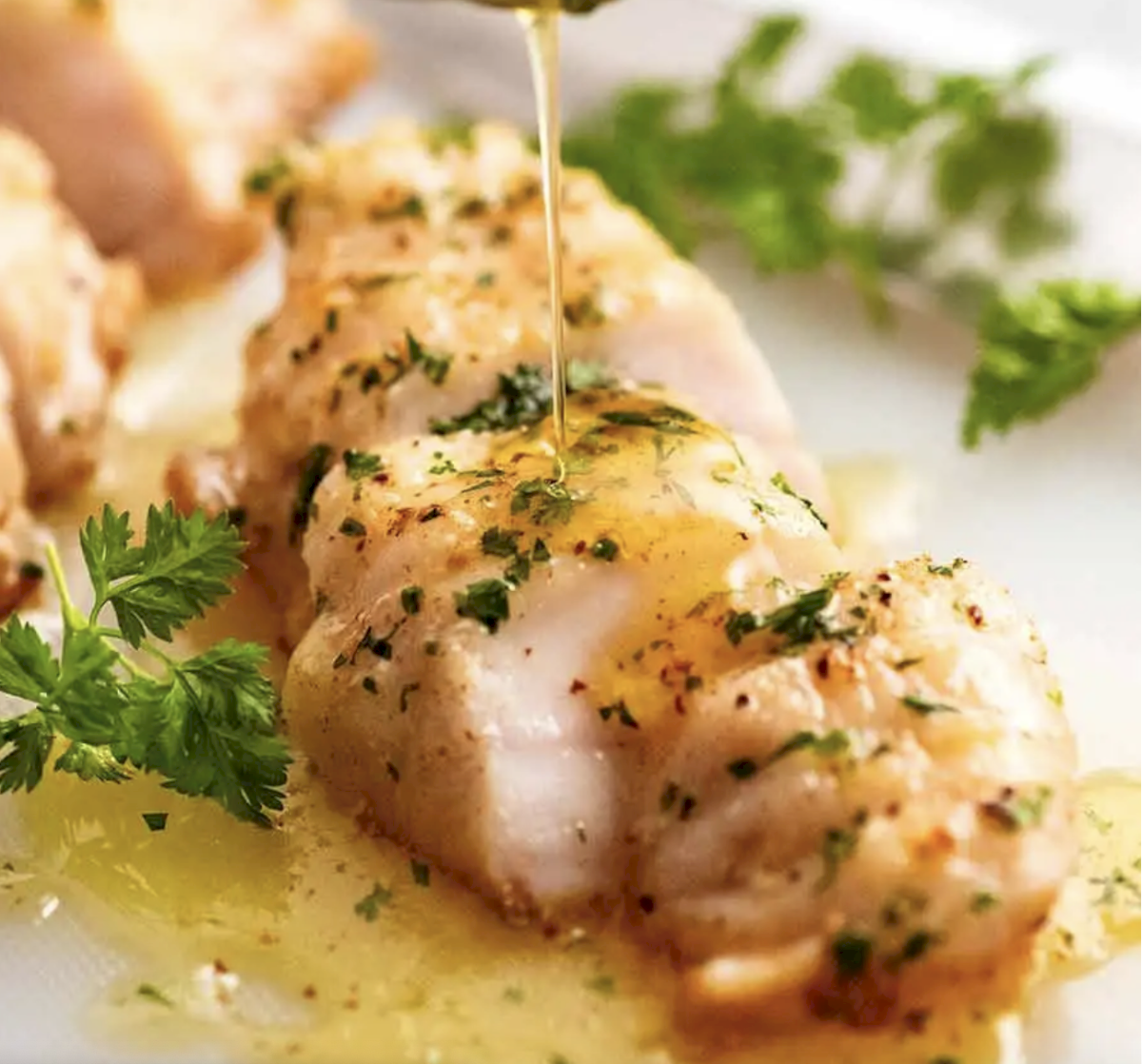Here’s one of those recipe gems that proves you can make something really incredible with very few ingredients! It’s a Pork Tenderloin with a Mustard Cream Sauce that looks and tastes like far more than the sum of its parts – just 3 ingredients, would you believe?! This is a sauce that’s truly excellent for pork fillets. It’s elegant and indulgent enough for company, yet quick enough for family dinner tonight too!
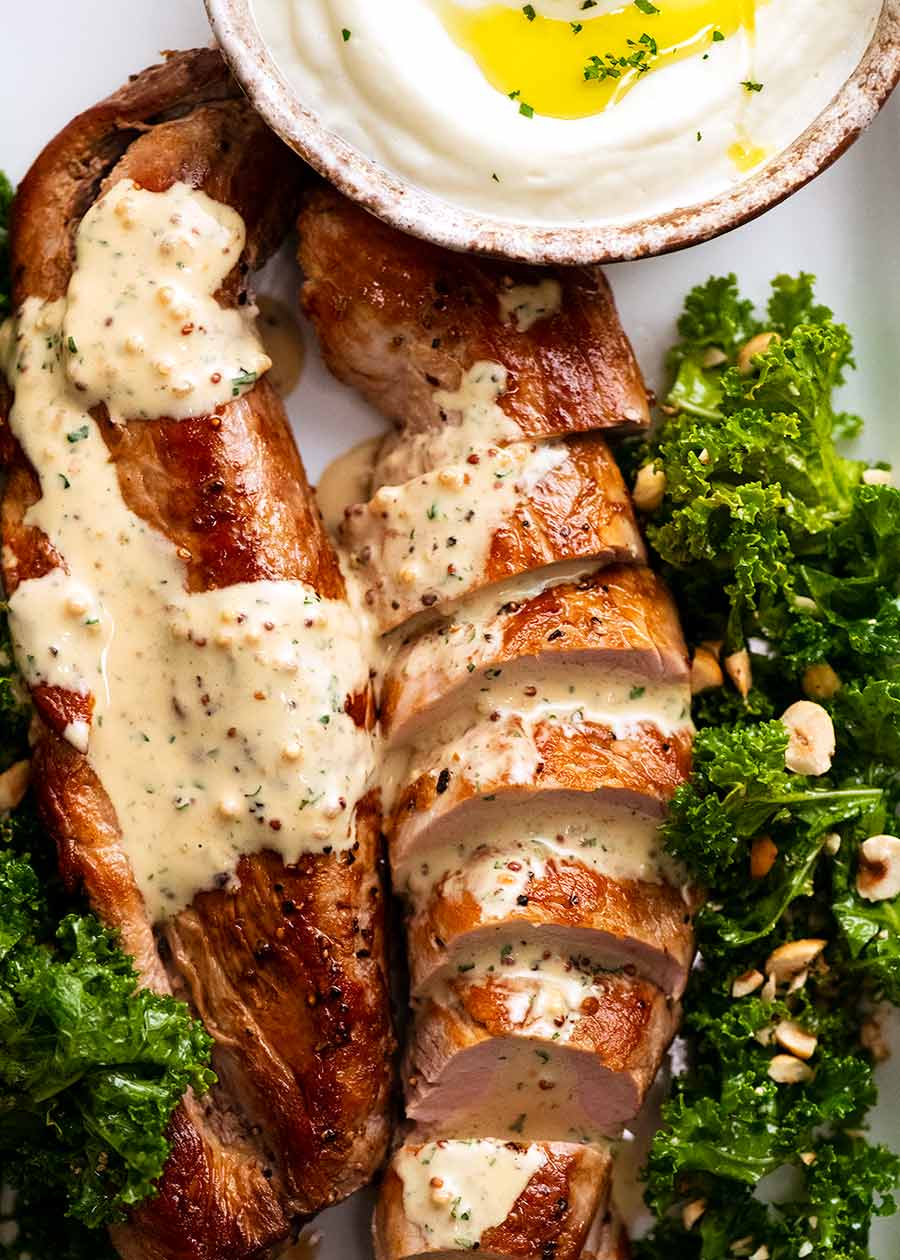
Pork Tenderloin with Creamy Mustard Sauce
With a sauce made from just cream, mustard and a pinch of tarragon, this is one of those recipes where I actually had to restrain myself from adding more ingredients. I thought, “It just looks too simple.” A ridiculous statement, I know. But if it were me reading this recipe, I would be suspicious. “How can such a simple sauce be as good as this lady says?”, I would think.
Well, I can do no different from everyone else in the online world and just use lots of CAPS and EXCLAMATION MARKS and write, “This is the BEST pork tenderloin recipe ever!!!!!” to do my best to convince you.😂
I can tell you that I did consider adding garlic and/or eschalots*. I thought about deglazing the skillet with white wine or masala. I pondered even boosting the sauce body with some stock.
But I realised it just doesn’t need it. This sauce is terrific as it is. It’s glorious. Sophisticated. Luxurious. <Insert more gushing adjectives here! 😂>
And YES it really only calls for cream, mustard and a pinch of tarragon!
* That’s shallots to those of you in the US.
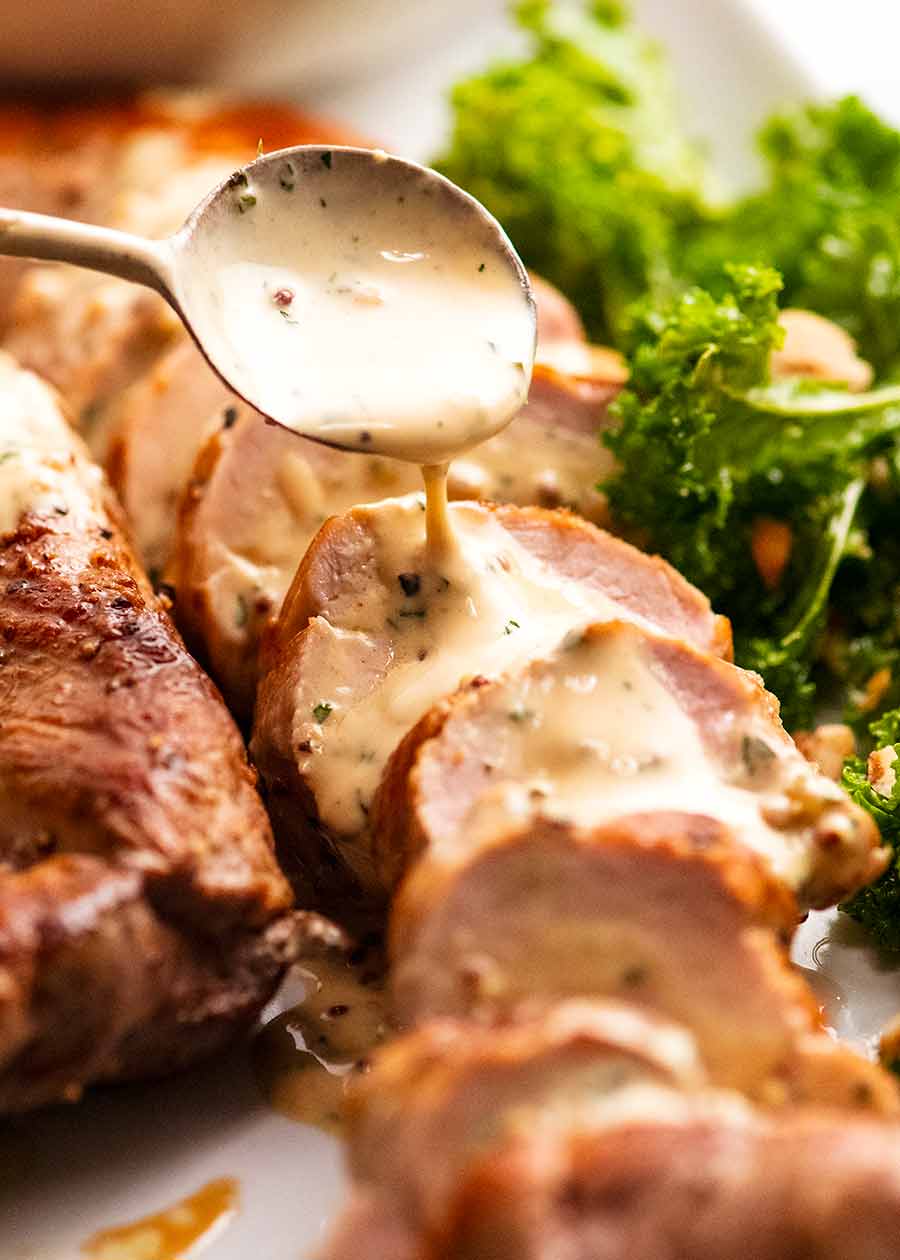
Ingredients in Pork Tenderloin with Creamy Mustard Sauce
So with that, hopefully I’ve convinced you that this really is all you need:
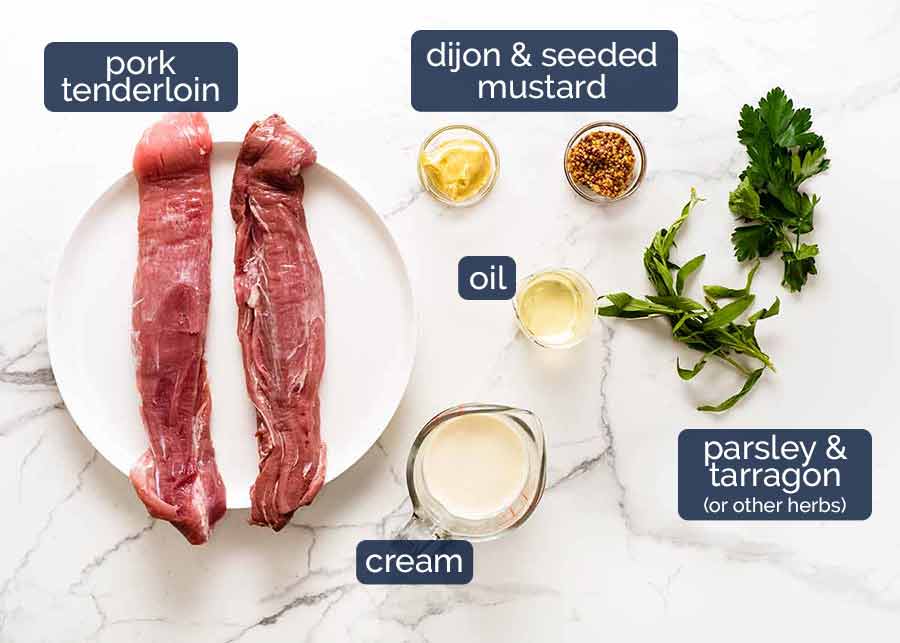
-
Pork tenderloin – Also called pork fillet, this is a lean and tender cut of meat. When cooked properly, it’s juicy and succulent. Tenderloins range in size from small ones around 300g (10oz) to very large ones weighing up to 700g (1.4lb). (Not in Australia, but I’ve seen ones this large overseas!) An average size is around 450 – 500g (16oz – 1 lb) each;
-
Oil – For searing. Any neutral-flavoured oil is fine here – vegetable, canola, or a mild olive oil;
-
Dijon and seeded mustard – Two different mustards here. They provide the flavour for the creamy sauce, including a welcome touch of tang. They also help thicken the sauce. Dijon is for the creaminess while seeded mustard brings textural pops of mustard flavour as well as a lovely look. I don’t recommend skipping the Dijon mustard, but if you don’t have seeded mustard that’s ok. Just add a bit of extra Dijon mustard to make up;
-
Cream – Full-fat for the best results. Low-fat cream works just fine, but won’t have the same rich and luxurious mouthfeel and flavour; and
-
Fresh herbs – A bit of tarragon adds lovely gentle aniseed notes to the sauce, while parsley brings a touch of freshness. I don’t recommend skipping the tarragon because it’s the “secret ingredient” here that adds intrigue to what would otherwise be a pretty pedestrian sauce. Parsley can be skipped on the other hand because it doesn’t contribute as much to the flavour.
How to make Pork Tenderloin with Creamy Mustard Sauce
It’s as simple as: Season → Sear → Bake → Make pan sauce!
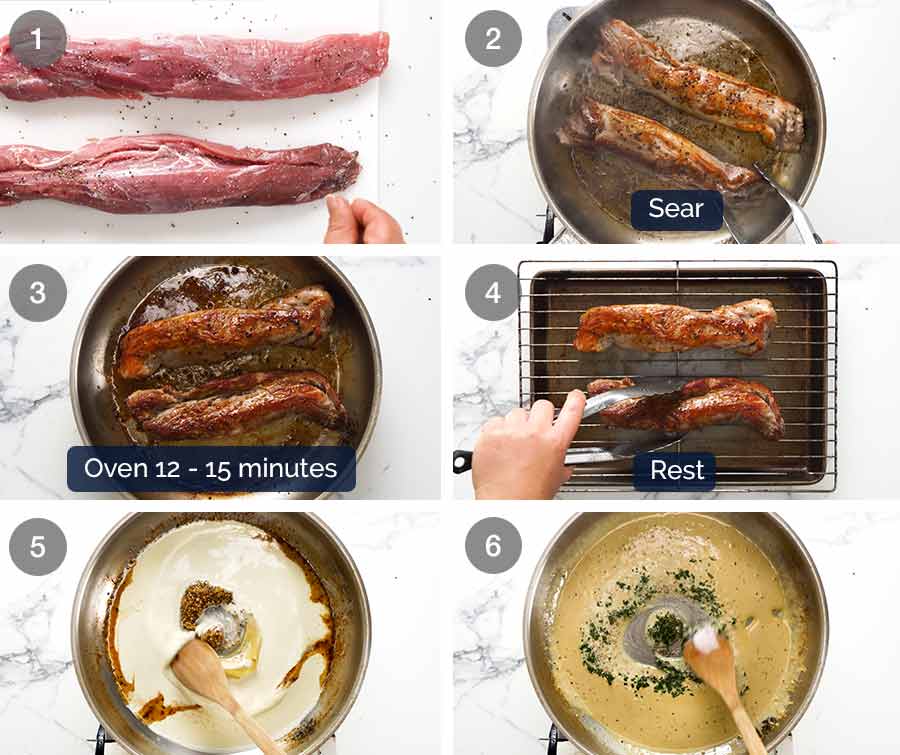
-
Season the pork all over with salt and pepper;
-
Sear the pork in a large skillet, turning to colour all sides (I do 4 sides in total). It takes about 5 minutes to get a nice colour all over. If your tenderloin is too long for your skillet (which most will be) just curl it to fit. The tenderloin shrinks as it cooks, so I find by the time I’ve finished it fits nicely inside the skillet;
-
Bake – Transfer to oven in the skillet and bake for 10 – 15 minutes, depending on the size of your pork tenderloin, or until the internal temperature is 65°C (149°F). This yields medium doneness, which will have the faintest blush of pink inside with beautifully juicy flesh. To cook fully with no pink at all, just take it to 68°C (155°F) – around 3 more minutes baking time;
-
Rest – Rest the pork for 5 minutes before slicing and serving along with the sauce;
-
Sauce – While the pork is resting, make the sauce. Return the skillet to the stove over medium heat. Add the cream and both mustards. Now mix, scraping the bottom of the pan to dissolve the tasty golden bits stuck to the bottom of the pan into the sauce (free flavour!); and
-
Add herbs – Once the sauce is hot, add the salt, pepper, parsley and tarragon. There is no need to simmer this sauce, it’s ready as soon as it’s warmed up! The mustard acts as a thickener so there’s no need for reduction.
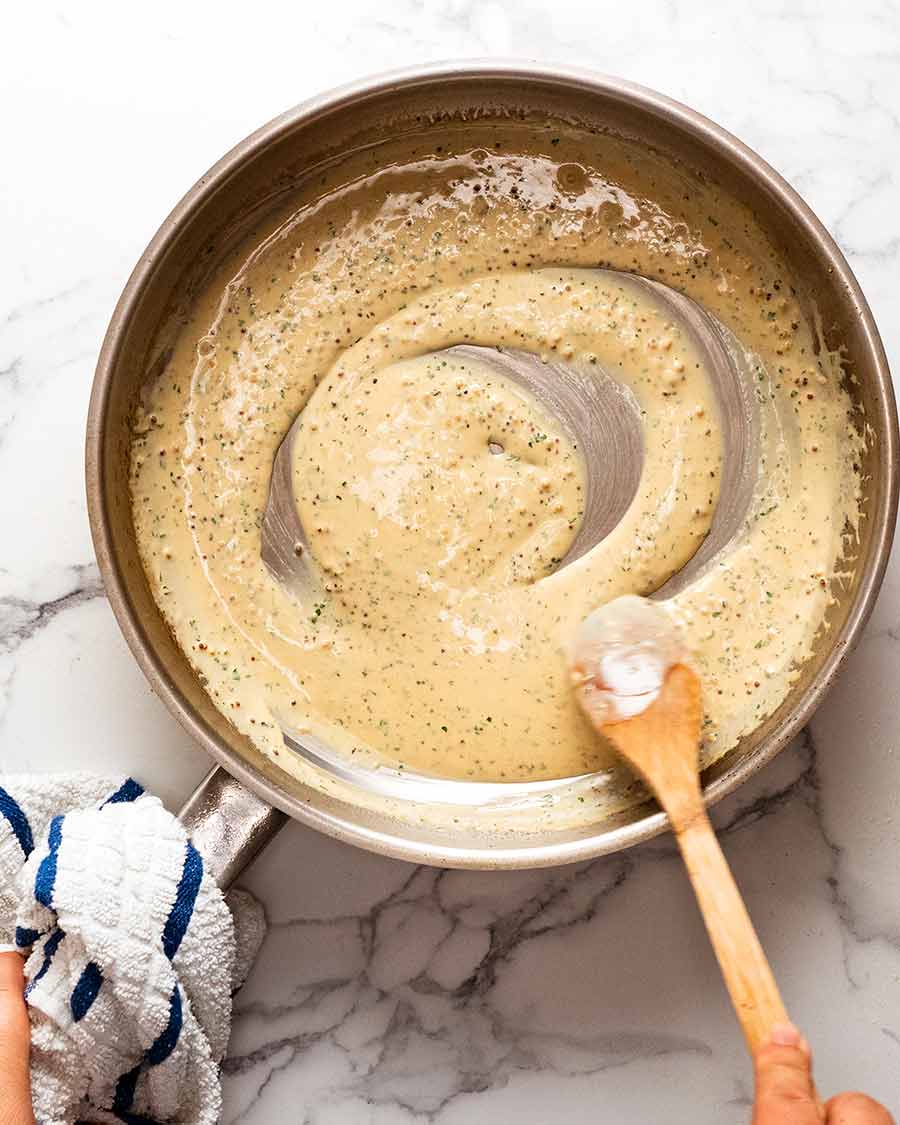
How long it takes to cook pork tenderloin
As a guide, a 400g (14oz) pork fillet will take 10 – 11 minutes, and a 500g (1lb) pork fillet will take around 13 – 15 minutes to reach my recommended internal temperature of 65°C/149°F for medium doneness. “Medium” means a hint of pink inside with optimum juiciness. Cooking less than medium is not recommended for pork, for food safety reasons.
If you do not want any pink at all, just add 3 minutes to the baking time and target an internal temperature of 68°C/155°F.
These internal temperatures are what you should target when you take the pork out of the oven. It will rise by a further 3 – 5°C (5°F) as it rests. (This is called “carry-over cooking”.) Therefore the final internal temperatures are slightly higher.
I know it’s frustrating but I can’t give you an exact baking time. Such is the case with pork tenderloin as there are many variables. It depends on the size and width of the pork fillet (these darn pigs, why can’t they all just be exactly the same size??! 😂). Also, heat retention of your skillet (a better skillet = faster cooking). It also depends on how long it took you to sear it and the accuracy of your oven.
So to ensure your pork tenderloin comes out perfect every time, I really recommend using an instant read thermometer. I have a Thermapen – more on this cool gadget here;
DO YOU REALLY HAVE TO COOK THE PORK FILLET ON THE STOVE THEN THE OVEN?
Yes, for the best results! Two reasons:
-
Only stove = 90% overcooked pork – If you try to cook the pork fillet only on the stove, you’ll end up with a thick outer band of waaaaayovercooked pork before the centre of the pork is cooked through;
-
Searing → Golden crust → Flavour, flavour, flavour! – Not just on the pork tenderloin but also crucially in the sauce. The golden bits stuck on the base of the pan after you sear the pork end up dissolving in the sauce. That “stuff” has a proper name: it’s called fond. These concentrated flavour deposits are culinary gold and are the same reason gravies made from roast drippings always taste amazing. Here it’s why we can make a sauce with just 3 ingredients taste so incredible!
If you cook the pork tenderloin only in the oven and skip the pan sear, you will miss out on the golden crust and bits, and in turn flavour. 😩
